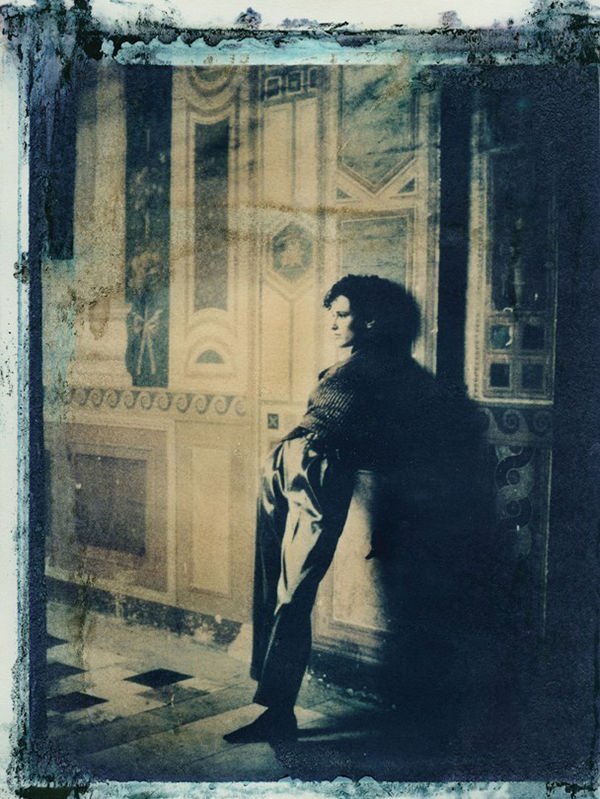Deborah Turbeville - the woman who changed the world of fashion photography.
- Iris Fogel Ben Hamou
- Sep 12, 2018
- 4 min read
I'm working on a series of posts that will be dedicated to women who inspire me - women who left a huge mark upon fashion world, and whose impact is still present.. I hope I will be able to pass on my excitement and impression to you, and that you will also be fueled by the desire to create, inspired by them.

I want to dedicate the first post to a revolutionary American photographer - Deborah Turbeville. The world of fashion photography as we know it today is so influenced by her, so at first glance we may not notice the innovation, But in the '1970s her photographic style evoked shock, And therefore her contribution to the world of fashion photography is enormous. Until the '70s fashion photography was clean and bright, while Turbeville's photos - with its frozen poses, the blurred, blazing looks of the models, the scratches, the rifts, the fog, the darkness, and the luxurious but crumbling buildings, stunned the fashion world. The pictures, which were mostly black and white, were sometimes scratched and wounded - as if they had been discovered in a dusty attic, and not as if they were created by a special invitation to a fashion magazine or a leading fashion designer.

Vogue Jan 1975

Women in the Woods: Ella and Isabella, VOGUE Italia, 1978 Turbeville was born in 1932 in an isolated farm in Massachusetts and grew up at geographical isolation, without many friends her age. She was greatly influenced by her surroundings and was a dreamy, talented girl. I came across a story about a childhood memory of hers - about a family painting that she created as a chore for the school, that the teacher did not like, and therfore she was expelled from school for several weeks. This memory was repeated over and over again and shaped her self-perception, perhaps even in it lies in the distance that is seen in the models' eyes in her photographs.

Vogue Italia, 1977 She burst into consciousness as part of a trio of revolutionary fashion photographers, who worked individually - but together they changed the world of fashion photography from quiet and calm, to turbulent, dark and even morbid. Turbeville was the only American and the only woman in the trio, which included Helmut Newton and Guy Bourdin. However, she was nicknamed "anti-Helmut Newton" because her photographs were a reversal of the urban erotic atmosphere that dominated his photographs-her photographs tended more towards the mysterious and dreamy direction.

Isabelle Weingarten, Mantova, Italy, 1977
Interestingly, Turbeville began her fashion career as a fashion editor in popular magazines such as Harper's Bazaar and Mademoiselle, and only in the mid-1960s began photographing. In the 1970s, she was already photographing for leading magazines such as Vogue America, Vogue Italia and leading fashion designers. One of her most famous and controversial works is "Bath House story", a swimsuit editorial for American Vogue in 1975. The unusual style drew comparisons and references to concentration camps, drug addicts and lesbian relations, and although today I think they would not have get any criticism, at the time of their publication they drew enormous criticism and, of course, publicity and sales. Turbeville argued that this was not her intention, she denied any connection to these comparisons, and claimed that her artistic motives were different. She created a similar series about ten years later. Turbeville's impression was that it was the most controversial publication published by the magazine until then, which she says has become one of the most identified works.



"I like to hear a clock ticking in my pictures." she once said, and perhaps these words best suited to this grandiose, poetic, and spectacular project "Unseen Versailles" - a prize-winning book published in 1982. She had been working on the book for two years, taking pictures on the hidden side of the Versailles Palace-the familiar palace, as no one had ever seen it. She resurrected the melancholic court ladies and recognized the sadness and boredom that surrounded them, and the aging glory of buildings and gardens during the changing seasons. This book, full of melancholic beauty, won first place in the American Book Award.









“I wanted to take photographs that were outside time, of people in today’s world with the atmosphere of the past reflected in their faces, of palaces and gardens abandoned and overgrown, Photographs that retain a history."

Rosima in Comme des Garçons at Vaux le Vicomte, for Parco, France, 1985

Models in Valentino, VOGUE Italia, 2011 Franca Sozzani, the legendary editor of Vogue Italy, said that in Turbeville's pictures "Every detail is perfect and wrong at the same time.”

Romeo Gigli, Mirabella, 1989
From an article about her, about a visit to her apartment in New York, which is located in a beautiful old building: "Turbeville’s building is uncomfortable in the here and now. So is Turbeville, who has made an illustrious career out of making images of forgotten grandeur that sadly looks at the vulgarity of the age it was never meant to witness."

The Silent Collection, Musee Picasso, Paris, 1980

W Magazine, Cantor Theater, Poland, 1997
And Turbeville attests to herself - "I always think I’m having a romance with the past. But I’m explaining the past in the present."

Victoria Guiness, Vogue Italy, 1983

Women In The Woods, Normandy, VOGUE Italia, 1978

Untitled, 1978 "Glass House"

Comme des Garçons, Passage Vivienne, Paris, 1980

Ungaro, Vogue, 1984 After her death in 2013, the New York Times reported: "Almost single-handedly turned fashion photography from a clean, well-lighted thing into something dark, brooding and suffused with sensual strangenes."

Self portrait of Deborah Turbeville










Comments